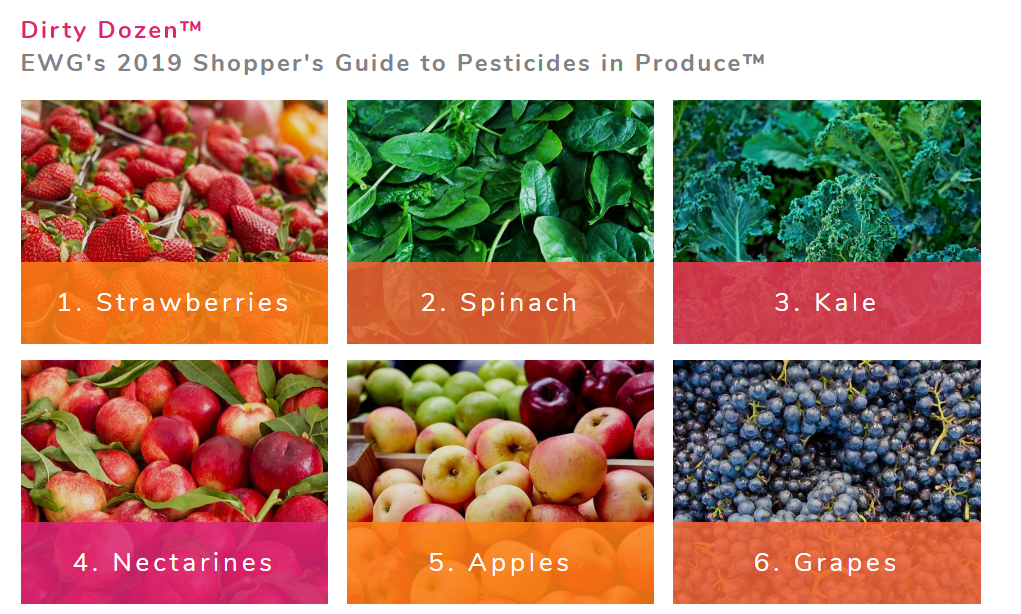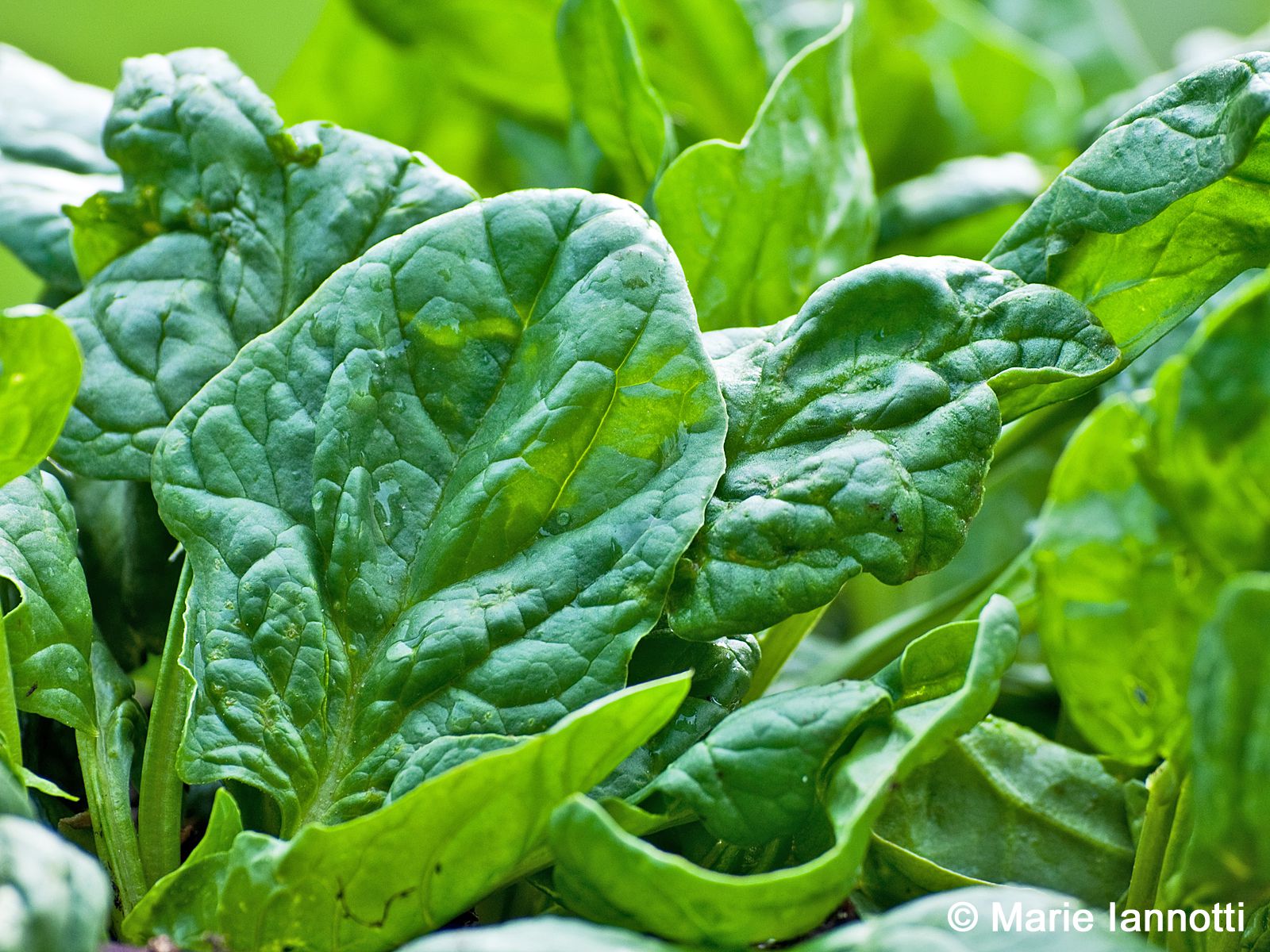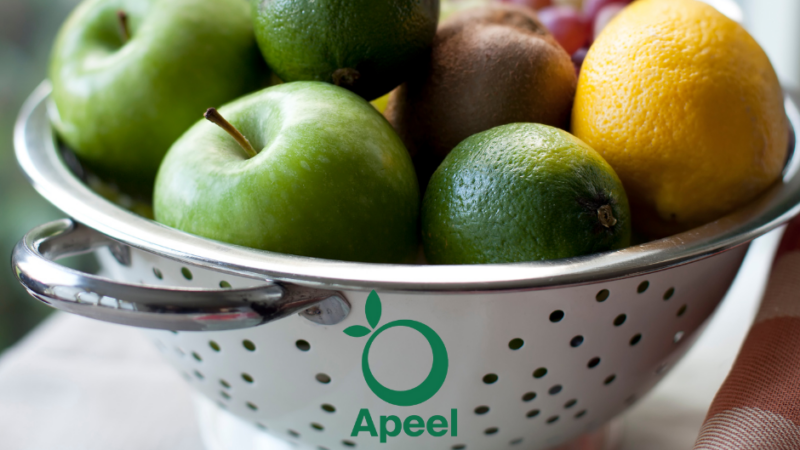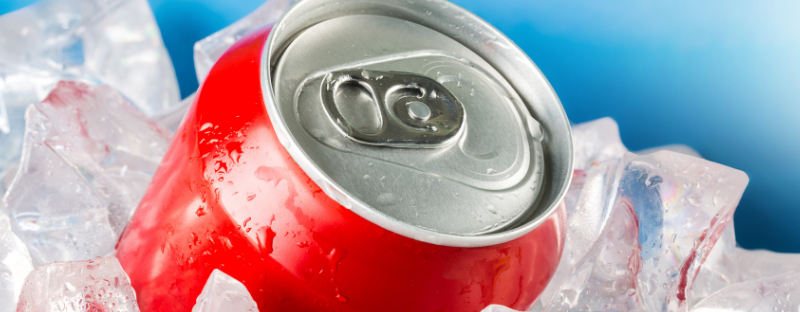Top 3 Most Contaminated Produce

The Environmental Working Group released its annual “Dirty Dozen” list of fruits and vegetables. The list includes the top 12 veggies and fruits found to have highest amount of pesticide residue. In 2019 strawberries, spinach, and kale top the list.
STRAWBERRIES
The average American eats about eight pounds of fresh strawberries a year – and with them, dozens of pesticides, including chemicals that have been linked to cancer and reproductive damage, or that are banned in Europe. Strawberry growers use jaw-dropping volumes of poisonous gases to sterilize their fields before planting, killing every pest, weed and other living thing in the soil.
Fumigants are acutely toxic gases that kill every living thing in the soil. Some were developed as chemical warfare agents, now banned by the Geneva Conventions. After growers inject fumigants, they cover the fields with plastic tarps to keep the gas underground and away from people and animals. But fumigants can leak during application and from torn tarps, sending the deadly fumes adrift and endangering farm workers and people who live nearby.

USDA tests found that strawberries were the fresh produce item most likely to be contaminated with pesticide residues, even after they are picked, rinsed in the field and washed before eating. For these reasons, in 2019, strawberries are once again at the top of the Dirty Dozen™ list.
The facts about strawberries and pesticides come from the USDA’s Pesticide Data Program. Between January 2015 and October 2016, USDA scientists tested 1,174 batches of conventional strawberries – about 89 percent of which were grown in the U.S., with the rest coming from Mexico, except one, which came from the Netherlands.
The USDA’s strawberry tests found that:
- Almost all samples – 99 percent – had detectable residues of at least one pesticide.
- Some 30 percent had residues of 10 or more pesticides.
- The dirtiest strawberry sample had residues of 23 different pesticides and breakdown products.
- Strawberry samples contained residues of 81 different pesticides in various combinations.
How hazardous are the chemicals used on strawberries? Some are fairly benign. But others are linked to cancer, reproductive and developmental damage, hormone disruption and neurological problems. Among the dangerous varieties are:
- Carbendazim, a hormone-disrupting fungicide that damages the male reproductive system, which was detected on 16 percent of samples. The EU has banned it because of safety concerns.
- Bifenthrin, a pyrethroid insecticide, which was found on more than 29 percent of samples, is an insecticide that the Environmental Protection Agency and California regulators have designated a possible human carcinogen.
For those of us who don’t want to eat pesticide residues and who want to stop fumigants from endangering farmworkers and neighbors of farms, buying organic is a small price to pay. The transformation of strawberries from an occasional treat to a cheap and abundant supermarket staple should serve as cautionary tale about the consequences of chemically driven industrial agriculture.

SPINACH
Spinach is packed with nutrients, making it a staple for healthy eating. But federal data shows that conventionally grown spinach has more pesticide residues by weight than all other produce tested, with three-fourths of samples tested contaminated with a neurotoxic bug killer banned from use on food crops in Europe.
Seventy-six percent of the samples contained residues of permethrin, a neurotoxic insecticide. At high doses, permethrin overwhelms the nervous system and causes tremors and seizures.
But several studies also found a link between lower-level exposure to permethrin-type insecticides and neurological effects in children. In one study, children with detectable permethrin residues in their urine were twice as likely to be diagnosed with ADHD as children with non-detectable levels of the pesticide.
The USDA found 83 samples that had residues of pesticides that are prohibited for use on spinach but legal on other food crops. Nearly all were grown in the U.S.
DDT, a pesticide long banned in this country, also showed up on spinach and very few other crops. Residues of DDT and its breakdown products were found on 40 percent of spinach samples.
The USDA washed all of the spinach samples vigorously before testing. The USDA has also detected pesticides on frozen and canned spinach, which suggests that washing and cooking reduces but does not eliminate pesticide levels.
KALE
Kale has higher pesticide residues than nearly all other produce found on supermarket shelves, according to the Environmental Working Group’s 2019 Dirty Dozen™.
For more information about reducing your exposure to pesticides, visit online at www.ewg.org/foodnews
Visit Whatsonmyfood.org
What’s On My Food? is a searchable database designed to make the public problem of pesticide exposure visible and more understandable.Learn how to grow your own food Growing Spinach







